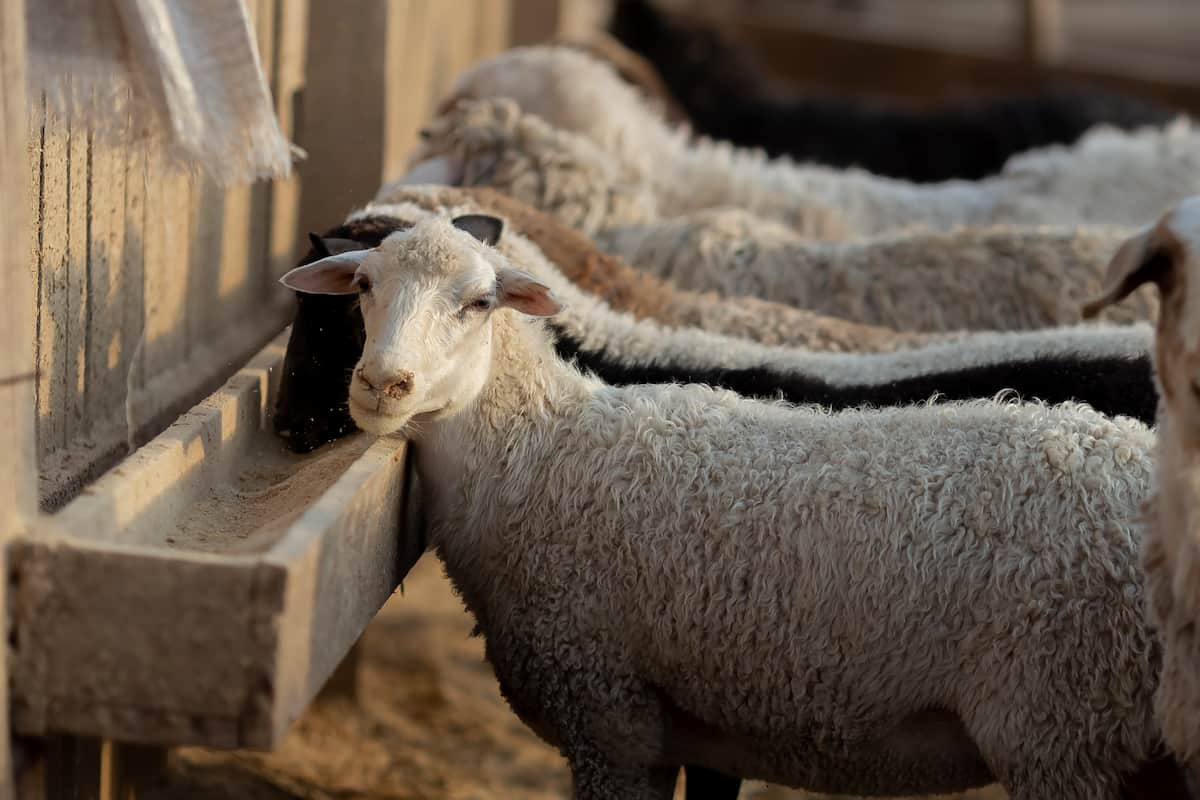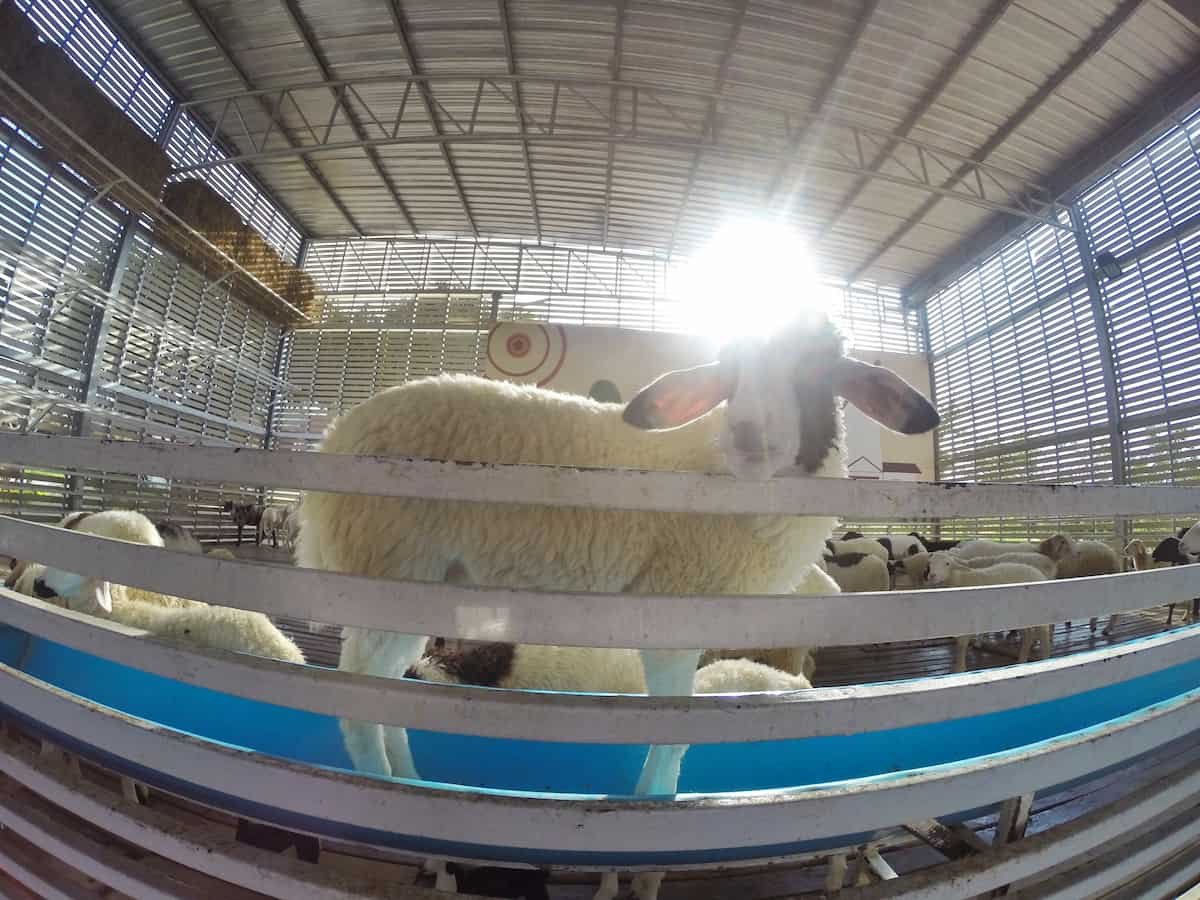Sheep farming in Kenya has experienced a significant transformation over the past few years. With the growing demand for mutton, wool, and other sheep-related products, Kenyan farmers have embraced sheep rearing as a lucrative agricultural enterprise. Below we learn about the sheep farming industry in Kenya, focusing on the different breeds, management practices, challenges faced, and opportunities for this burgeoning sector.

How to Start Sheep Farming in Kenya
Sheep Breeds in Kenya
The choice of sheep breed is essential in determining the success of sheep farming in Kenya. The country is home to various indigenous and exotic breeds, each with unique characteristics that suit different farming goals and environmental conditions. The most common breeds in Kenya include:
Red Maasai: This hardy indigenous breed is well adapted to Kenya’s arid and semi-arid regions. They are known for their high resistance to internal parasites and diseases, making them suitable for low-input farming systems. Red Maasai sheep produce good-quality meat and have a moderate growth rate.
Dorper: Originating from South Africa, Dorper sheep are an exotic breed known for their excellent meat quality and rapid growth rate. They are hardy, adaptable, and thrive in various climatic conditions. Dorper sheep have become popular in Kenya due to low maintenance requirements and high market demand.
Hampshire: A large-bodied breed from the United Kingdom, Hampshire sheep are renowned for their high-quality meat and fast growth. They require more intensive management than the Red Maasai and Dorper breeds but yield higher returns in terms of meat production.
Merino: Originally from Spain, Merino sheep are primarily kept for their fine, high-quality wool. They are well suited to the cooler highland regions of Kenya. Merinos require more care than meat breeds but are valuable to the country’s wool industry.
Sheep Housing and Management
Sheep farming in Kenya necessitates proper housing and management practices to ensure the well-being and productivity of the animals. Key considerations for sheep housing include:
- Ventilation: Good airflow is essential in maintaining the health of the sheep. The housing structure should be designed to provide adequate ventilation, prevent humidity buildup, and minimize the risk of respiratory infections.
- Space: Sheep require adequate space to move around, feed, and rest. Overcrowding can lead to stress, poor growth, and increased disease susceptibility. The recommended space allowance per sheep is 1.5 to 2 square meters.
- Feeding and Watering Facilities: Clean and easily accessible feeding and watering troughs should be provided. It is essential to ensure a consistent supply of clean water, as sheep consume 5 to 10 liters of water per day, depending on age, size, and environmental conditions.
- Fencing and Security: Sheep housing should be adequately fenced to protect the animals from predators and theft. In addition, guarding animals such as dogs can enhance security.
Feeding and Nutrition
Proper nutrition is a critical aspect of sheep farming in Kenya. Sheep require a balanced diet to support growth, reproduction, and health. The primary components of a sheep’s diet include:
- Forage: Sheep are natural grazers and can efficiently convert forage to meat and wool. High-quality pasture or hay should form the basis of their diet. Providing adequate forage during drought or when pasture is scarce is essential.
- Concentrates: Grains, such as maize, barley, and wheat, can supplement the sheep’s diet, especially during periods of high nutritional demand, such as pregnancy, lactation, and rapid growth.
- Mineral Supplements: Sheep require essential minerals, such as calcium, phosphorus, and salt, to support various physiological functions. Mineral blocks or loose mineral supplements can be provided to ensure the animals receive adequate minerals in their diet.
- Protein Supplements: Protein-rich feeds, such as legume hay, oilseed cakes, and fishmeal, can be used to supplement the sheep’s diet when forage quality is low or during periods of high nutritional demand.
In case you missed it: How to Build Sheep House/Shed in 6 Steps: DIY Guide for Beginners

Reproduction and Breeding
Efficient reproduction and breeding practices are essential for the success of sheep farming in Kenya. Key factors to consider include:
- Breeding stock selection: Selecting high-quality breeding stock is crucial for improving productivity and profitability. Farmers should choose breeding animals based on the growth rate, body conformation, disease resistance, and adaptability to local environmental conditions.
- Mating management: Proper mating management can help optimize reproductive performance. The recommended mating ratio is one ram for every 30-40 ewes. The breeding season should be planned to ensure that lambing coincides with the availability of adequate forage, which helps improve lamb survival and growth.
- Pregnancy and lambing care: Pregnant ewes require close monitoring and proper nutrition to support the growth of the developing fetus. Providing a clean, dry, and well-ventilated lambing area can help reduce the risk of infections and complications during birth.
Disease Control and Prevention
Disease outbreaks can result in significant economic losses for sheep farmers in Kenya. To minimize the risk of disease, farmers should implement the following measures:
- Vaccination: Regular vaccination is crucial in preventing common sheep diseases, such as contagious ecthyma (Orf), contagious caprine pleuropneumonia (CCPP), and enterotoxemia (pulpy kidney disease).
- Parasite control: Internal and external parasites can negatively impact sheep health and productivity. Regular deworming and ectoparasite control measures, such as dipping or spraying, are essential in maintaining the herd’s health.
- Biosecurity: Implementing biosecurity measures, such as isolating new or sick animals, maintaining proper hygiene, and controlling the movement of people and vehicles on the farm, can help reduce the risk of disease introduction and spread.
Marketing and Value Addition
To maximize returns from sheep farming in Kenya, farmers should explore various marketing and value-addition strategies, such as:
- Market research: Understanding market trends and consumer preferences can help farmers make informed decisions on production and marketing.
- Value addition: Processing sheep products, such as meat, wool, and skins, can increase their value and enhance marketability. Farmers can also explore niche markets, such as organic or halal meat production.
- Partnerships and networking: Collaborating with other sheep farmers, industry stakeholders, and government agencies can help farmers access information, training, and market opportunities.
In case you missed it: Dorper Sheep Facts: Origin, Physical Characteristics, Size, Pros, and Cons

Conclusion
Sheep farming in Kenya presents numerous opportunities for economic growth and poverty alleviation. By embracing best practices in breeding, management, feeding, disease control, and marketing, Kenyan sheep farmers can tap into the growing demand for sheep products and significantly improve their livelihoods.
- Feed Your Flock for Less: Top 10 Tips to Save on Chicken Feed
- Ultimate Guide to Ossabaw Island Hog: Breeding, Raising, Diet, and Care
- Hatching Answers: The Top 10 Reasons Your Chickens Aren’t Laying Eggs
- Eggs and Economics: Breaking Down the Cost of Raising Backyard Chickens
- Defend Your Greens: Proven Methods to Keep Iguanas Out of Your Garden
- Ultimate Guide to Cinnamon Queen Chicken: A Comprehensive Guide for Beginners
- Ultimate Guide to California Tan Chicken: Breeding, Raising, Diet, Egg-Production and Care
- Ultimate Guide to Marsh Daisy Chicken: Breeding, Raising, Diet, and Care
- 10 Types of Chicken Farming Businesses You Can Start for Profits